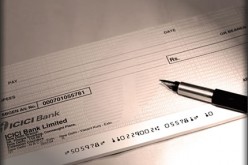Nervous investors may be tempted to take what cash they have and stash those funds in a mattress, figuring that this is one place that their money won’t be at risk. With the stock market fluctuating widely, confidence in investment banks dropping through the floor, and big questions remaining about  just how bad the current crisis is, the temptation to stash your cash somewhere in your home looms large.
just how bad the current crisis is, the temptation to stash your cash somewhere in your home looms large.
But, as we all know, cash on hand can easily be lost, stolen, or destroyed in a fire, a move that can have devastating consequences.
Instead, battered consumers are taking a fresh look at an old-time, but reliable investment option: safe certificates of deposit (CDs). Yes, these low-yielding, FDIC insured deposit accounts are back in favor again thanks to a shaky market and consumers who cannot stomach sharp losses.
A Certificate of Deposit Sampler
Rates for CDs are nowhere near what they were in the early 1980s, when returns of 15% or more were common. Then again, mortgage rates aren’t high these days either, therefore finding a decent return means anything above 4%.
For the record, CDs are FDIC-insured for up to $100,000 or $200,000 if jointly held. Most financial institutions pay a base rate for a minimum deposit (such as 1.50% for six months) while increasing their rates for larger deposits and longer terms.
ING Direct, an online banking institution is one company offering tiered interest on certificates of deposit. For six-month deposits of under $50,000 the rate is 1.75%, but jumps to 3.20% for deposits of $50,000 to $99,999. For deposits of $100,000 and above, the rate peaks at 3.4%.
The best rates are paid for long term deposits, particularly those of a year or longer. A twelve month CD at ING currently pays 4% while an eighteen month CD tops out at 4.5%. Longer term rates are lower, which reflects both a promotional on ING’s part and possibly a hedge by the bank on midterm rates.
Other institutions offering higher rates include GMAC Bank (4.35%, $500 minimum, 12-month term); Nationwide Bank (4.05: $500 minimum, 12-month term); and Pacific Mercantile Bank (4.5%, $500 minimum, 12-month term). If you’re worried about a bank’s health, check out Bankrate.com’s Safe ‘n Sound bank rating system to find out who is at risk. As long as your money is in accounts covered within FDIC parameters, you’ll be okay, but going through a bank crisis is unnerving and can be a hassle.
Strategy Based On Your Age
The best financial planning strategy is often based on your age. People in or closer to retirement will often flock to the safest investment choices while younger savers are more willing to take a risk, knowing that they can still recover from a market turn down some 20,30, even 40 years later.
Check out a smart saving strategies by age segmentation chart to learn just how you should proceed, especially during these times when financial upheaval looms large. Get equipped to make right decisions and avoid panicking which can cost you dearly.
end of post idea for home improvement
view and analyze home improvement ideas at our LetsRenovate center
Helpful article? Leave us a quick comment below.
And please give this article a rating and/or share it within your social networks.








